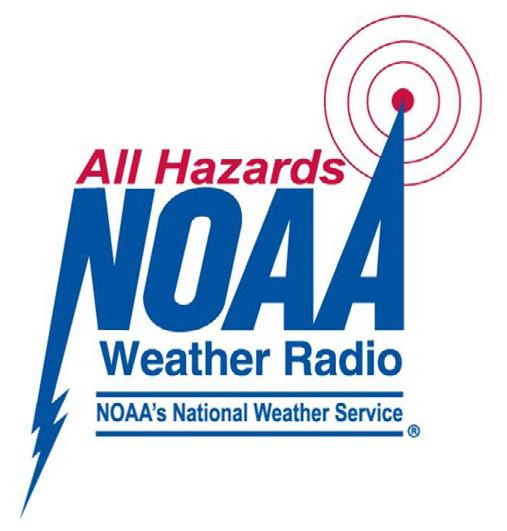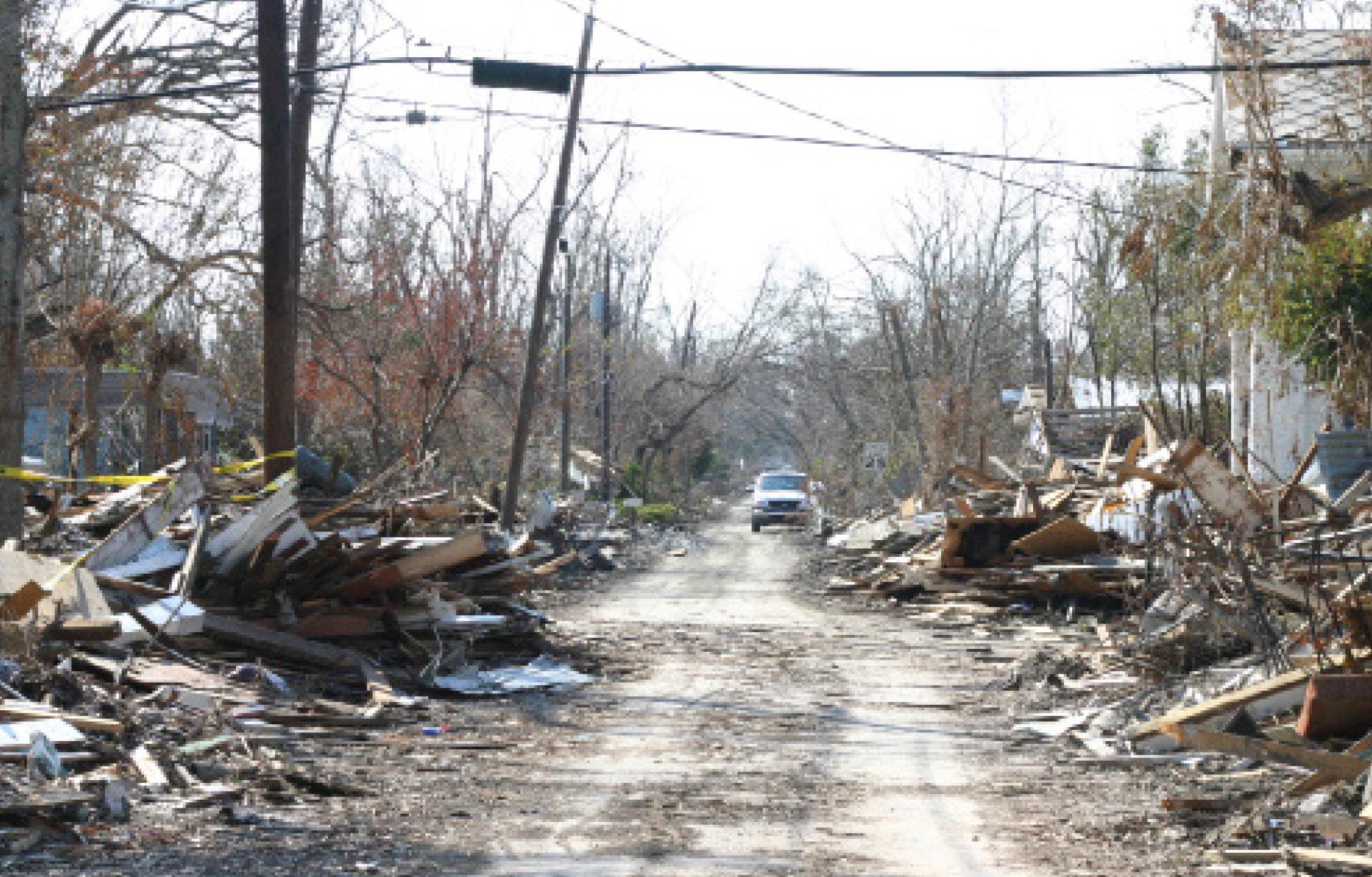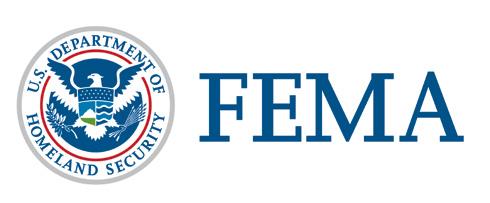
13 minute read
Quick Reference Guide
Business Continuity Plan
Advertisement
STEP 1:
Consult the Disaster Resistant Business Toolkit.
Develop Business Continuity and Crisis Communications Plans Create a Business Continuity Plan that includes strategies for storing critical business documents and data.
Disaster Resistant Business (DRB) Toolkit
Assign a Business Continuity Team Leader responsible for implementing the Business Continuity Plan to bring your organization back to business after an event. Business Continuity Plan
Create a Crisis Communications Plan that includes internal and external communication protocols for before, during, and after a disaster.
Crisis Communications
STEP 2:
Conduct an Employee Awareness Campaign Conduct an employee awareness campaign to educate staff on disaster safety.
The awareness campaign should include educating staff on the safest response before, during, and after a hurricane, including definitions of National Hurricane Center (NHC) terms, e.g., tropical storm/hurricane watch vs. warning. Address shelter locations, emergency communication plans and policies, when to evacuate (when advised), seeking high ground for flash flooding, and avoiding entering flood waters. The campaign should also provide guidance on critical actions after a hurricane event.
Advise employees to learn their BFE by visiting the online FEMA Flood Map Service Center, contacting their insurance company, or calling their local floodplain management department. How to Prepare for a Hurricane. Prepareathon
FEMA Flood Map Service Center.
Reference How to Prepare for a Hurricane for additional content.
STEP 3:
Develop an Employee Training Program Develop a training program that provides activities for employee engagement before, during, and after a hurricane. Your training can be incorporated into established campaigns like National Preparedness Month and should focus on disaster preparedness and safety. Drills or exercises should be incorporated into the program. Include Turn Around, Don’t Drown! into your messaging. Prepare Your Organization for a Hurricane Playbook. Prepareathon
Turn Around, Don’t Drown!
STEP 4:
Conduct an Employee Training Session Hold a preparedness discussion with your staff. Discuss what you have done to prepare for disasters, review your Business Continuity Plan, review your Crisis Communication Plan, and share awareness campaign key messages. Use the Prepare Your Organization for a Hurricane Playbook to facilitate this discussion and engage your employees.
The discussion should:
• Educate the employees about your business continuity and crisis communications plans;
• Include basic first aid and CPR training; and,
• Describe evacuation and sheltering plans. Prepare Your Organization for a Hurricane Playbook. Prepareathon
PREPAREDNESS ACTION PREPAREDNESS SOLUTIONS
STEP 5:
Conduct a Hurricane Drill Conduct your disaster drill, but before you begin, contact your local emergency manager for additional ideas and to offer them a way to participate. PREPAREDNESS RESOURCES
Prepare Your Organization for a Hurricane Playbook. Prepareathon
STEP 6:
Review Insurance Coverage (Including Flood Insurance)/ Create Inventory Meet with your insurance agent annually to review your insurance, especially property coverage limits, deductibles, and coinsurance requirements. Maintain a current photo or video inventory of your premises, equipment, inventory, supplies, etc. Insurance Coverage Discussion Form
SUGGESTED ACTION:
Develop an Employee Shelter/ Evacuation Plan and Include an Emergency Supply Kit Develop an employee sheltering/evacuation plan to include an Emergency Supply Kit.
Emergency Supply List
SUGGESTED ACTION:
Purchase a NOAA Weather Radio for Monitoring During an Event/Download a Mobile Alerting App Purchase a NOAA Weather Radio with single area message encoding (SAME) and download a severe weather alerts app for your mobile device.
You may also sign up to receive emergency notifications from your local emergency services. Download Be Smart. Take Part. Know Your Alerts and Warnings for a summary of available notifications.
Designate a Team Leader and assign them to monitor your NOAA Weather Radio during an event. Listen and heed instructions given by local emergency management officials. Have backup batteries and chargers. NOAA Weather Radio All Hazards

RESOURCES:
FEMA. How to Prepare for a Hurricane. Prepareathon

SURROUNDINGS RISKS
Signs Consult a professional landscaper, and develop a plan for your surroundings that mitigates against damage from hurricanes by removing dead branches and other potential projectiles or falling trees.
Flagpoles
Landscaping/Trees
Fences
Floodwalls and Levees Consult with a floodplain manager or professional engineer regarding land use or code restrictions/requirements in your area. If elevating the structure or performing floodproofing techniques is not feasible, then consider designing floodwalls or levees on the property to attempt to repel floodwaters.
MITIGATION SOLUTION REFERENCES

Remove Trees and Potential Windborne Missiles: Protecting Your Property from High Winds
FEMA P-936, Floodproofing NonResidential Buildings.
FEMA P-259, Engineering Principles and Practices for Retrofitting FloodProne Residential Structures.
SPACE RISKS
Contents Determine and relocate your critical contents at least one foot above the BFE or the DFE, whichever is higher.
Chemicals MITIGATION SOLUTION

Establish a method for safeguarding chemicals in your Preparedness and Mitigation Project Plan. REFERENCES
FEMA P-936, Floodproofing NonResidential Buildings.
Emergency Response Plan
SYSTEMS RISKS
Mechanical Systems Consult a professional engineer to evaluate and design structural connections to resist the expected wind loads and provide uplift resistance.
Additionally, consult a professional to evaluate and design for the following flood mitigation techniques:
• Elevate service equipment at least 12-inches above BFE.
Use platforms or pedestals for equipment installed on the ground.
• Relocate equipment to an existing location above the BFE.
• Protect the equipment in place with floodwalls, shields, or anchors and tie-downs.
Protect drainage systems with backflow valves. Consult a professional plumber for proper installation of these devices.
Fuel Tanks/Systems
Electrical Systems
Communications Systems
Lightning Protection Systems
Utility Connections
Antenna
Other Rooftop Structures
Sewer and Water Management Systems

FEMA P-936, Floodproofing NonResidential Buildings.
The International Code Council’s International Building Code (IBC) addresses construction methods for most commercial structures as well as residential structures that are not covered by the International Residential Code. The IBC contains both prescriptive and engineered provisions, and applies to the many different types of commercial structures.
It is important to note that the recommendations in this document are general and are intended to highlight areas of a structure that could be strengthened against hurricanes. However, the recommendations cannot account for all of the different building types and variables in the IBC. As a result, a licensed professional is necessary to identify and perform mitigation activity appropriate for your organization
STRUCTURAL RISKS MITIGATION SOLUTION REFERENCES
Continuous Load Path – Foundation Consult a professional engineer to evaluate elevation and continuous load path. The entire structure can be bolted to its foundation using anchor bolts along the foundation sill.
Roof Systems Consult a professional engineer to design the roof to withstand the expected wind loads, provide uplift resistance, and prevent water intrusion. Consider the many features that define a roof, including slope, structure, covering, and attachments, and address the roof as a system. Ensure that the following design/ mitigation measures are included:
• Roof-to-Wall Connections
• Roof Structure
• Roof Decking/Sealant
• Roof Covering
• Roof Flashing
• Vents How to Prepare for a Hurricane. Prepareathon
FEMA P-424, Design Guide for Improving School Safety in Earthquakes, Floods, and High Winds.
Secure Built-Up and Single-Ply Roofs: Protecting Your Property from High Winds

STRUCTURAL RISKS MITIGATION SOLUTION REFERENCES
Skylights Upgrade to pressure-rated, impact-resistant skylights.
Gable-End Bracing Hire a professional to brace any gable-end walls taller than 4 feet so that loads on the gable-end walls are distributed over multiple roof trusses or rafters. FEMA P-424, Design Guide for Improving School Safety in Earthquakes, Floods, and High Winds.
Home Builder’s Guide to Coastal Construction
Technical Fact Sheet Series FEMA P-499 / December 2010
Soffits Proper attachment is the most common cause of soffit failures. This can be addressed by installing wood backing or supports as an attachment point for soffits. If it is not possible to install wood supports, the soffit should be secured at 12-inch intervals on each side to limit flexing during high-wind events. FEMA P-499, Home Builder’s Guide to Coastal Construction.
Home Builder’s Guide to Coastal Construction
Technical Fact Sheet Series FEMA P-499 / December 2010
FEMA P-499, Home Builder’s Guide to Coastal Construction.
STRUCTURAL RISKS MITIGATION SOLUTION
Gutters and Downspouts Install noncombustible systems designed for highwind speeds that provide uplift resistance. REFERENCES
FEMA P-424, Design Guide for Improving School Safety in Earthquakes, Floods, and High Winds.
Wall Systems Consult a professional engineer to design walls to withstand high-wind loads, provide uplift resistance, and prevent water intrusion. Consider the many features that define a wall, including structure, covering, and openings. Address the wall as a system, ensuring the following design/mitigation measures are included:
• Wall Structure
• Wall Sheathing
• House Wrap
• Wall Coverings
• Flashing Around Openings
Home Builder’s Guide to Coastal Construction
Technical Fact Sheet Series FEMA P-499 / December 2010
FEMA P-499, Home Builder’s Guide to Coastal Construction.

Secure Metal Siding and Metal Roofs: Protecting Your Property from High Winds
Maintain EIFS Walls: Protecting Your Property from High Winds
STRUCTURAL RISKS MITIGATION SOLUTION REFERENCES
Openings
• Garage/Rolling Doors • Windows • Exterior Doors • Install pressure-rated, impact-resistant garage doors or brace existing doors with assemblies designed to increase pressure ratings.
• Install pressure-rated, impact-resistant windows, or protect with tested and approved opening protection. If these options are not available, as a temporary measure use 5/8-inch or greater plywood, cut to fit and ready to install, and do not use tape, as it does not protect against broken glass.

• Install pressure-rated, impact-resistant exterior doors.
• Ensure flashing and weather stripping around the windows and doors is designed/installed to protect against water intrusion from wind-driven rain. Reinforce or Replace Garage Doors: Protecting Your Property from High Winds
Protect Windows and Doors with Covers: Protecting Your Property from High Winds
Home Builder’s Guide to Coastal Construction
Technical Fact Sheet Series FEMA P-499 / December 2010
FEMA P-499, Home Builder’s Guide to Coastal Construction.
FEMA P-424, Design Guide for Improving School Safety in Earthquakes, Floods, and High Winds.
STRUCTURAL RISKS MITIGATION SOLUTION REFERENCES
Canopies, Awnings, and Carports Add metal connectors to meet or exceed expected wind loads. For the carport, consider placing connectors:
1. Between supporting roof members and horizontal beams;
2. At each beam-to-column connection; and
3. At each column-to-foundation connection.
Safe Room or Shelter Install a safe room or shelter that is constructed using FEMA guidance or that meets ICC/NSSA 500 standards in an area safe from flooding.
Reference FEMA P-361 and Quick Guide Flood Hazard Elevation and Siting Criteria for Community Safe Rooms for additional information about flood elevation and siting criteria for community safe rooms.
Note: If the structure is located in a flood zone, safe rooms and shelters are not recommended. FEMA P-361, Safe Rooms for Tornadoes and Hurricanes: Guidance for Community and Residential Safe Rooms.
FEMA P-320, Taking Shelter from the Storm: Building a Safe Room for Your Home or Small Business.
ICC/NSSA 500-2014: Standard for the Design and Construction of Storm Shelters.
FEMA P-804, Wind Retrofit Guide for Residential Buildings.
STRUCTURAL RISKS MITIGATION SOLUTION
Safe Room or Shelter REFERENCES
Quick Guide Flood Hazard Elevation and Siting Criteria for Community Safe Rooms

BARA

Elevation Consult a professional engineer to evaluate elevating your structure so the lowest floor is at or above the BFE or DFE, whichever is higher.
Consult a professional engineer to determine your BARA if a tornado shelter is not installed.
Note: Do not plan to shelter-in-place if your structure is in a flood or storm surge evacuation zone.
FEMA P-431, Tornado Protection: Selecting Refuge Areas in Buildings
FEMA P-550, Recommended Residential Construction for Coastal Areas: Building on Strong and Safe Foundations
FEMA P-312, Homeowner’s Guide to Retrofitting
Wet Floodproofing Wet floodproofing is a technique that allows flood waters to enter the structure.
Consult a professional engineer to evaluate options for wet floodproofing the structure. Consider the following items when wet floodproofing: • Wet floodproofing is not typically done in climate controlled areas.
• All materials used should be resistant to damage from flood waters.
• Wet floodproofing does not protect the structure from flowing water, erosion, scour, debris or damage to contents. • Post-flood clean-up should be considered before using wet floodproofing techniques. FEMA P-936, Floodproofing Non-Residential Buildings
FEMA P-259, Engineering Principles and Practices for Retrofitting FloodProne Residential Structures.
STRUCTURAL RISKS MITIGATION SOLUTION REFERENCES
Wet Floodproofing • Installation of properly sized and placed wall openings, below the expected flood level.
By allowing water to enter the structure, you may cause a secondary issue with protection of systems. Reference the SYSTEMS section to mitigate these items.
Dry Floodproofing Dry floodproofing is a technique that prevents the entry of water into the structure. Dry floodproofing should only be considered in instances where the flood waters are expected to last a short duration and a depth of less than three feet.
Because the walls are exposed to floodwaters and the pressures they exert, dry floodproofing is recommended only for structures with walls constructed of flood-resistant materials and depths are low. FEMA P-936, Floodproofing NonResidential Buildings.

FEMA P-259, Engineering Principles and Practices for Retrofitting FloodProne Residential Structures.
Consult a professional engineer to evaluate options for dry floodproofing the structure. Consider the following items when dry floodproofing:
• All exterior walls of the structure must be sealed and possibly reinforced.
• All openings below BFE must be permanently sealed or have enhanced flood shields installed.
• Protected from seepage.
• Anchoring of structure to resist floatation and lateral movement.
• Selecting and designing proper drainage systems to eliminate excess hydrostatic loads.
• Design watertight core areas to protect vital systems if dry floodproofing the entire structure is not possible.
SERVICE ACTION MITIGATION SOLUTION REFERENCES
Contact Your Local Emergency Management Office Contact your local emergency management office to identify emergency management personnel and resources in your area.
Identify Ways to Engage and Participate in Your Community Contact your local emergency management office during your disaster planning to learn how you may provide service(s) before and after a disaster strikes. Include this information in your Business Continuity Plan. Emergency Management Agencies

In addition to preparing your organization, it is important to understand your local and tribal community emergency operation plans and to work with other organizations in your community or tribe. Opportunities to participate in whole community planning include the following:
• Learn about public-private partnerships.
• Participate in local or tribal organizations that make your community a safer and more prepared place to live and do business, such as your local
Citizen Corps Council, hazard mitigation planning team, or local and tribal Community Emergency
Response Team (CERT). Prepare Your Organization for a Hurricane Playbook. Prepareathon
• Citizen Corps Council includes representatives from all sectors of the community. This whole community membership helps to ensure the community perspective is reflected in local emergency management practices.
3
Take Action
1. Make sure that your Preparedness and Mitigation Project Plan is approved by the building owner if you are leasing or renting your building. Always check with your local building department to secure required permits prior to performing any retrofitting or other mitigation activity.
2. Perform preparedness and mitigation activities as prioritized in the Preparedness and Mitigation Project Plan. Document your preparedness and mitigation as instructed in the applications for STAFF, SURROUNDINGS, SPACE, SYSTEMS,
STRUCTURE, and SERVICE with signatures, photographs, receipts, or letters from an organization manager, engineer, or design professional.


